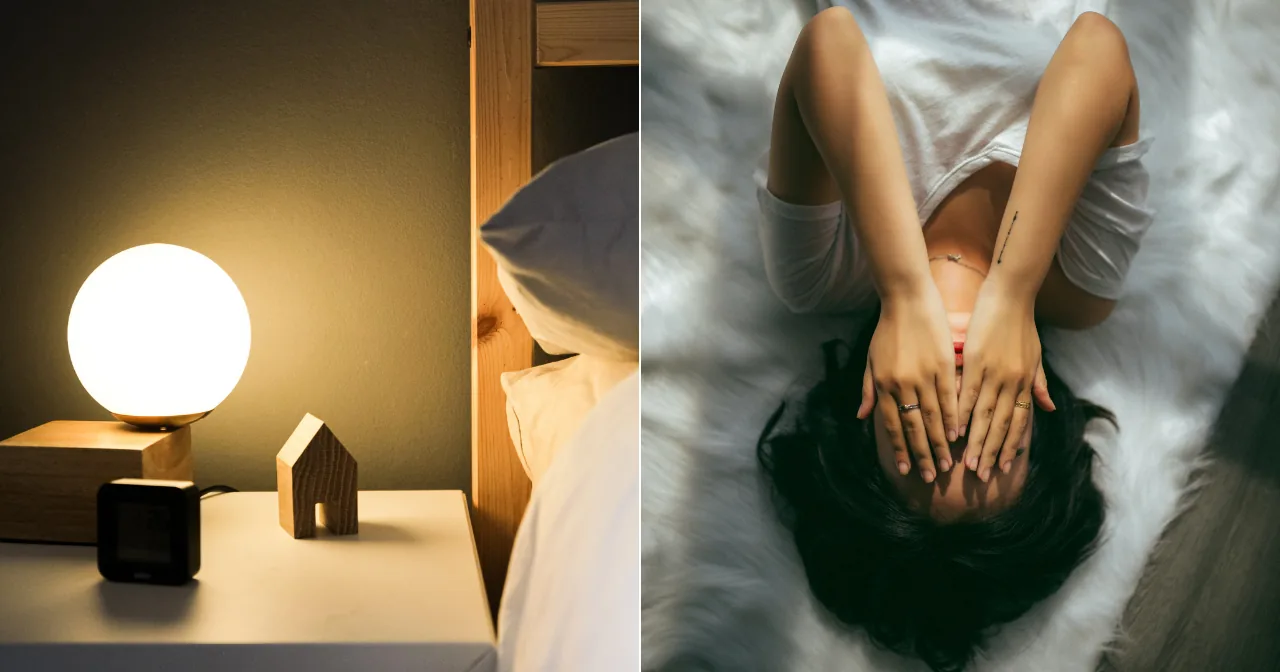Research reports that American women are disproportionately affected, with the highest obesity rates among all groups in the U.S. About 80% are classified as overweight or obese.
Disparities in weight loss
Research indicates that African American (AA) women tend to lose less weight compared to their Caucasian counterparts.
Contributing Factors
The contributing factors to the disparities are;
- Limited access to nutritious food
- Inadequate health insurance
- Lack of safe spaces for physical activity
Barriers to Weight Management
Challenges that hinder weight management efforts include:
- Personal beliefs
- Limited time
- Family dynamics
- Lack of motivation
- Financial constraints
Cultural Influence on Body Image
Cultural norms within the AA community, which often embrace larger body sizes and promote a positive body image, can also influence health behaviors. While fostering a positive body image has psychological benefits, it may reduce motivation to maintain a healthy weight. In Black culture, obesity and being overweight are often considered acceptable and carry little to no stigma. Cultural perspective may partially explain why general health promotion efforts are less effective in this community. The study reports that many Black female students aim to embody the culturally valued “thick and curvy” figure, consuming specific foods to shape their bodies while avoiding activities that might result in weight loss.
Why it may be difficult to seek care
A deep-rooted distrust of the healthcare system makes it difficult for many AA women to seek medical advice or treatment.
Physical inactivity as a health risk factor
Underestimating body weight can reduce engagement in healthy behaviors, such as regular physical activity. Physical inactivity is a major contributor to non-communicable diseases and mortality, emphasizing the need to address these issues within the AA community.
 Six Healthy Lifestyle Practices to Alleviate Depression Symptoms
Six Healthy Lifestyle Practices to Alleviate Depression SymptomsCauses of Depression
Depression can arise from a multitude of factors, such as genetic, environmental, psychological, and biochemical ones.
Risk factors for depression
A person is more likely to experience depression if they have trauma, significant life changes, stress, a family history of depression, physical illnesses (like diabetes, cancer, or Parkinson’s disease), or as a side effect of certain medications.
Diagnosis of major depression disorder
A minimum of two weeks must pass with some of these symptoms and signs being presented almost daily to be diagnosed with Major Depressive Disorder:
Common symptoms of depression
The common symptoms of depression include.
- Persistent sadness,
- Hopelessness,
- Pessimism,
- Emptiness,
- Lack of energy,
- Feeling guilty or unworthy. The lack of interest or pleasure in pastimes,
- Alterations in appetite that result in either weight gain or loss,
- Slower speech, movement, or thought.
- Increased fidgeting
- Difficulty focusing, thinking coherently, or making decisions
- Suicidal thoughts, suicidal attempts, thoughts of death, or self-harming behavior
Lifestyle Practices to Alleviate Depression Symptoms
- Self-care. Practice stress-reduction techniques like tai chi or meditation. Get enough sleep, exercise, and eat a balanced diet. For the most part, adults require 7 to 9 hours of sleep. Refrain from using recreational drugs and alcohol, as these can exacerbate symptoms and complicate the treatment of depression.
- Educating family and friends about depression: They can assist you in identifying early indicators that your depression might be relapsing.
- Maintain your treatment regimen. Continue taking your medication and attending therapy sessions even after you feel better. Sudden medication discontinuation may result in withdrawal symptoms and a relapse of depression. If necessary, work with your physician to modify your medication or dosage to adhere to your treatment plan.
- Make modest, achievable goals: realistic goals to increase motivation and self-assurance. During the first stages of care, you might want to walk, have lunch with a friend, or make a bed. Gradually increase your goals as you get better.
- Identify the warning signs: Determine what triggers your depression, and if you notice any unusual changes in your feelings, thoughts, or behavior, speak with your doctor or a mental health professional. Keep a journal of your daily emotions, feelings, and reactions to identify trends and identify the things that lead to depression.
- Seek support. Maintaining relationships with people is crucial, especially during difficult times or periods, regardless of whether you receive support from family or a support group.
 Coronary Heart Disease Risk Factors: Measures for Reduction
Coronary Heart Disease Risk Factors: Measures for ReductionCoronary Heart Disease (CHD) is a chronic and intricate ailment associated with substantial morbidity and mortality, primarily attributed to atherosclerotic lesions in coronary vessels, ultimately leading to myocardial infarction (MI) and stroke. Unhealthy eating habits, often influenced by chronic inflammation, are closely linked to CHD. Various health conditions, lifestyle choices, as well as your age and family history, can elevate the risk of developing heart disease; approximately 47% of Americans have at least one of the three primary risk factors for heart disease: high blood pressure, elevated cholesterol levels, and smoking. Certain risk factors for heart disease, such as age or family history, are beyond your control. However, you can proactively reduce your risk by changing the factors you can control.
Behaviors that heighten the risk for heart disease are
- Smoking: The Food & Drug Administration (FDA) estimates that cardiovascular disease causes 800,000 deaths and 400,000 premature deaths per year. About one-fifth and one-third of these result from smoking, respectively. Additionally, research reported that smoking resulted in a 51% increased risk of coronary heart disease in patients with diabetes. Cigarette smoking has the potential to harm the heart and blood vessels, amplifying the risk for heart conditions like atherosclerosis and heart attacks. Even nonsmokers face an increased risk of heart disease when exposed to secondhand smoke.
- Excessive alcohol consumption can elevate blood pressure and elevate the risk of heart disease. It also leads to increased triglyceride levels, a fatty substance in the blood associated with an elevated risk of heart disease.
- Sedentary lifestyle: Insufficient physical activity is a precursor to heart disease and can strengthen the likelihood of other medical conditions that serve as risk factors, including obesity, high blood pressure, high cholesterol, and diabetes. Engaging in regular physical activity can effectively decrease the risk of heart disease.
- Unhealthy Eating Habits: A diet rich in saturated fats, trans fats, and cholesterol has been associated with heart disease and related conditions like atherosclerosis. Recent research has provided more explicit evidence that trans-fat significantly raises the risk of cardiovascular disease by adversely affecting lipids, endothelial function, insulin resistance, and inflammation. For each 2% increase in calories consumed from trans-fat, there is a 23% higher risk of coronary artery disease. Recent studies and systematic reviews have focused on red and processed meat consumption. The research consistently demonstrates an increased risk of coronary heart disease and cardiovascular events. The risk ranges from 15% to 29% higher with red meat consumption and 23% to 42% higher with processed meat consumption
Measures for Reducing the Risk of Coronary Heart Disease
- Educating children and adolescents about the dangers of smoking to deter the initiation of tobacco use. The Food & Drug Administration (FDA) reported that the risk of coronary artery disease decreases to the level of lifetime nonsmokers within four years of quitting and within ten years.
- The DASH, Mediterranean, and vegetarian diets have the most evidence for cardiovascular disease prevention. The DASH diet has been shown to lower systolic blood pressure by up to 11.5 mmHg in adults with hypertension. Additionally, reported findings indicate a 21% reduction in coronary artery disease risk with adopting the DASH diet.
- The American Heart Association suggests substituting saturated fat with polyunsaturated and monounsaturated fats. A 5% shift from saturated fat to polyunsaturated fat consumption is linked to a 10% lower risk of coronary artery disease.
- Engaging in about 150 minutes per week of moderate-intensity aerobic activity significantly lowers the risk of cardiovascular disease. Moderate-intensity aerobic exercise is characterized by activity that maintains a heart rate between 50 to 70 percent of the individual’s maximum heart rate, calculated as 220 beats per minute minus the person’s age.
 Strategies for Improving Sleep Quality
Strategies for Improving Sleep QualitySleep is essential for the health and well-being of children, adolescents, and adults. Quality sleep supports emotional well-being, metabolic health, cognitive function, mental health, and cardiovascular and cerebrovascular health. Additionally, getting sufficient, high-quality sleep helps reduce the risk of fatigue-related accidents and injuries, such as motor vehicle accidents and workplace incidents.
Recommended Sleep Duration
The American Academy of Sleep Medicine (AASM) and the Sleep Research Society (SRS) recommend that adults aim for at least 7 hours of sleep each night to promote optimal health. Similarly, the National Sleep Foundation (NSF) advises adults to get 7 to 9 hours of sleep per night, with older adults requiring 7 to 8 hours.
Prevalence of Sleep Disorders and Mental Health Impacts
About one-third of the population experiences insomnia symptoms, such as difficulty falling or staying asleep. Additionally, 4% to 26% of individuals report excessive sleepiness, and 2% to 4% have obstructive sleep apnea. Insomnia is associated with a significantly increased likelihood of mental health issues; individuals with insomnia are 10 times more likely to experience clinically significant depression and 17 times more likely to experience anxiety compared to those without insomnia. Poor sleep is also linked to post-traumatic stress, eating disorders, and psychosis spectrum experiences, such as delusions and hallucinations.
Improving sleep Quality
Improving sleep quality benefits mental health, and research reports that sleep plays a causal role in mental health challenges. Better sleep positively affects future mental health, even those without clinical symptoms.
Strategies for Improving Sleep Quality
- Creating a relaxing sleep environment
- Limiting daytime naps
- Managing stress and worries
- Being mindful of food and drink choices
- Sticking to a consistent sleep schedule
- Incorporating physical activity into daily routines.
 Four Major Diseases linked to smoking
Four Major Diseases linked to smokingAccording to the Centers for Disease Control and Prevention (2021), Cigarette smoking damages almost every organ in the body, leading to numerous diseases and overall health decline. In the United States, smoking is responsible for over 480,000 deaths each year, nearly one in five deaths. For women, smoking can make it more difficult to conceive and can adversely affect a baby’s health before and after birth. In men, smoking can reduce sperm quality, decreasing fertility and increasing the risk of congenital disabilities and miscarriage. Smoking also harms oral health, potentially leading to tooth loss. Moreover, it increases the risk of cataracts, which cloud the eye’s lens and impair vision. It can cause age-related macular degeneration (AMD), damaging a small spot near the retina’s center needed for central vision. Additionally, smoking is a risk factor for type 2 diabetes mellitus and can complicate its management, with active smokers having a 30-40% higher risk of developing diabetes compared to nonsmokers.
The four major diseases linked to smoking are
- Cardiovascular Diseases
- Increased mortality rates due to smoking.
- Elevated risk of ischemic heart diseases.
- Respiratory Conditions
- Smoking is a primary cause of chronic respiratory deaths.
- Increased risk of respiratory diseases and tuberculosis.
- Stroke
- A Study reports a Positive correlation between smoking prevalence and stroke-related deaths.
- Lung Cancer
- Study reports there is a higher likelihood of lung cancer with increased daily cigarette consumption.
 Risk Factors for Uterine Fibroids Among Black Women
Risk Factors for Uterine Fibroids Among Black WomenUterine fibroids (UFs) represent the most prevalent non-cancerous tumors among women of reproductive age. Symptomatic fibroids can lead to significant health issues and are the primary reason for hysterectomies in the United States and globally, contributing to substantial socioeconomic impacts and affecting over 70% of women of reproductive age (Langton et al., 2024). African American women tend to develop fibroids approximately 10 years earlier than White women in the US and bear a disproportionate health burden from these tumors
Black women experience UFs at higher rates, with an earlier onset, more severe symptoms, and faster disease progression compared to other groups.
According to Sithembinkosi Ndebele (2024), 85% of participants were non-Hispanic Blacks. Black participants had a higher likelihood of a UF diagnosis, and the following risk factors were reported contributing to the high prevalence of UFs in Black individuals:
- Socioeconomic Status: Lower socioeconomic status is reported to increase the rates of UFs.
- Adverse Environmental Exposures: Increased exposure to environmental pollutants is associated with a higher prevalence of UFs.
- Chronic Stress: Experiences that increase chronic stress are significant contributors.
Lifestyle and socioeconomic factors, closely tied to neighborhood characteristics, further influence UF prevalence. These factors include:
- Body Mass Index (BMI): A higher BMI correlates with a higher risk of UFs.
- Alcohol Use: Regular alcohol consumption is positively correlated with UF diagnosis.
- Income and Occupation: These factors influence access to healthy food and healthcare.
 The Health Risk Hiding In Your Light Switch and How to Prevent It
The Health Risk Hiding In Your Light Switch and How to Prevent ItLight at night (LAN) refers to the use of artificial or natural light during nighttime hours for visibility purposes.
Deprato et al. (2025) reports that approximately 80% of the global population is exposed to light-polluted skies, and LAN is now considered a major environmental pollutant. Sources include streetlights, vehicles, homes, industries, and even atmospheric reflections.
LAN disrupts the body’s circadian rhythm, the internal 24-hour clock regulated by the brain’s suprachiasmatic nucleus. When artificial light interferes with natural dark–light patterns, it delays the circadian clock and sleep-wake cycle, leading to melatonin suppression, sleep disturbances, and an increased risk of various diseases (Deprato et al., 2025). Blue-rich and bright LED lights cause the most significant disruption (Deprato et al., 2025). The study reports that LAN exposure is linked to higher rates of depression, bipolar disorder, anxiety, and other severe mental disorders, likely due to circadian misalignment, sleep deprivation, and changes in brain chemicals such as serotonin and dopamine.
Implications:
1.The findings suggest that light pollution and artificial light exposure at night are not only environmental/visual concerns but also have mental health implications.
2. Encourages rethinking nighttime habits — including screen use before bed, bedroom lighting, blackout curtains, and managing exposure to streetlights or indoor lights at night.
3.The implications of light at night may vary by culture or by groups
4. Designing homes and neighborhoods that minimize intrusive nighttime lighting in bedrooms, promoting lighting standards that consider human health
Prevention/ Mitigation strategies
1.Reduce screen time before bed: Use “night mode” or blue-light filters on devices, dim the brightness, and avoid stimulating content.
2. Improve bedroom lighting: Use blackout curtains, turn off or dim indoor lights, remove bright electronic indicators, and opt for warm, low-intensity lighting in the evening.
3. Maintain a consistent sleep–wake schedule: Even if artificial light is present, a regular circadian rhythm helps mitigate disruptions.
4. Use lighting design for sleep: In the evening, switch to warmer (red/orange) wavelengths; avoid bright overhead white/blue light late at night.
5.Monitor and adjust ambient outdoor lighting: If streetlights are intrusive, consider using blackout curtains or an eye mask; if indoor lighting spills into the night, turn off non-essential lights.
Source: https://doi.org/10.1016/j.scitotenv.2025.179188



